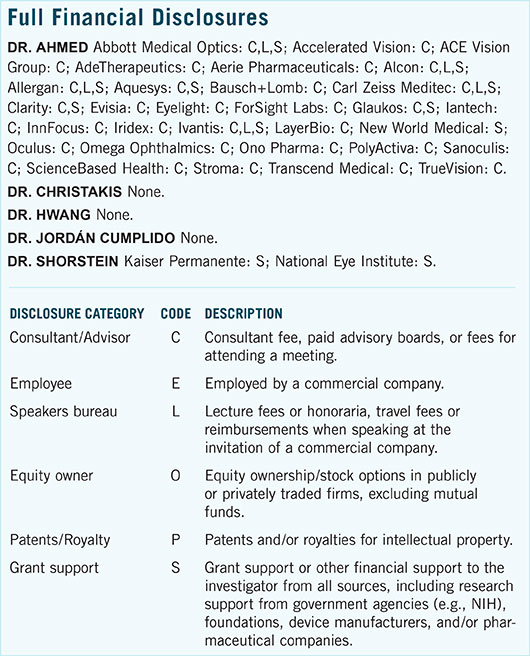Download PDF
Highlighted Paper at AAO 2015: Glaucoma
The 5-year results of the Ahmed Versus Baerveldt Study (AVB) yielded no surprises, corroborating findings reported at 3 years. Each of these glaucoma shunt devices has particular advantages and drawbacks, and this study can help inform ophthalmologists’ choices.
This international multicenter trial randomly assigned 238 patients to the Ahmed FP7 valve implant (New World Medical) or the Baerveldt 350 glaucoma implant (Abbott Medical Optics). Patients had refractory or high-risk glaucoma, with a mean preoperative intraocular pressure (IOP) of 31.2 mm Hg on 3.1 medications.
| The Ahmed Versus Baerveldt Study: Five-Year Treatment Outcomes. When: Sunday, Nov. 15, 3:12-3:19 p.m., during the first glaucoma original papers session (2:00-3:45 p.m.); there is a second session on Tuesday. Where: Bassano 2701. Access: Free. |
Pros and cons of the devices. At 5 years, the Baerveldt group had a lower failure rate (34%) and yielded lower IOP on fewer medications (13.4 mm Hg on 1.2 medications) compared with the Ahmed (failure rate, 51%; 16.3 mm Hg on 1.8 medications). But the Baerveldt group had a higher incidence of hypotony (6%), while the Ahmed group had none. Visual outcomes were similar between the 2 devices.
Although the study wasn’t powered to guide patient selection, AVB study director Panos G. Christakis, MD, at the University of Toronto, called the Ahmed implant a good choice for patients who need an immediate postoperative reduction in IOP and have a moderate long-term IOP target. However, glaucoma medications and additional surgery might be necessary to achieve this goal.
On the other hand, he said, “The Baerveldt implant should be considered in patients with a low IOP target or in patients who are intolerant of topical medications.” These patients, he warned, should be followed closely in the early postoperative period, when IOP volatility and IOP spikes and hypotony may occur.
Study chair Iqbal (Ike) K. Ahmed, MD, concurred. “Ultimately, selecting a device should be based on surgeon factors such as experience and outcomes, as well as patient factors, including target IOP and goals of treatment.”
—Miriam Karmel
___________________________
Relevant financial disclosures—Dr. Ahmed: Abbott Medical Optics: C,L,S; New World Medical: S. (Note: Dr. Ike Ahmed is not the inventor of the Ahmed glaucoma valve.) Dr. Christakis: None.
For full disclosures and disclosure key, see below.

More from this month’s News in Review